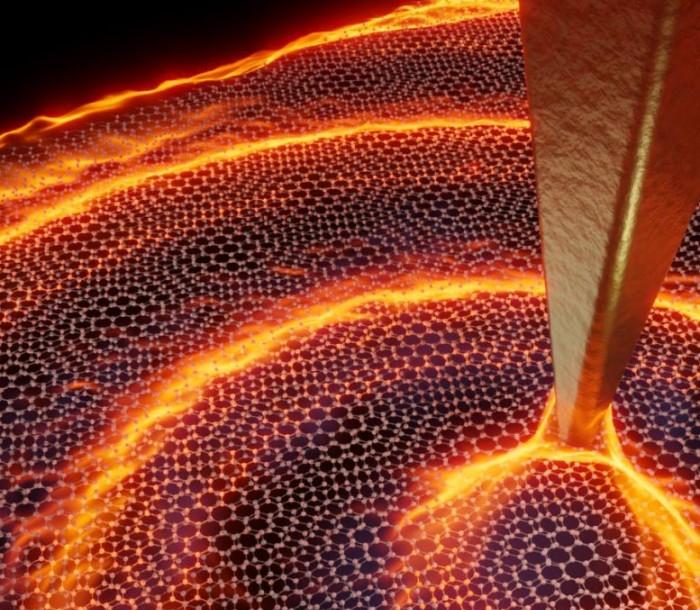An international team of researchers in Nature Physics reported how light and electrons move in a material in synergy when infrared light is illuminated. When two layers of graphene are placed on top of the other and twisted at a very small angle between them, a "moiré pattern" is formed, and it turns out that the physical properties of the system will change dramatically. In particular, near the "magical" angle of 1 degree, the speed of the electrons drops sharply, favoring the interaction between the electrons. This interaction creates a novel superconducting and insulating phase in the twisted bilayer graphene.

Along with many other fascinating properties discovered over the past three years, this material has been shown to show an extremely rich set of physical phenomena, but most importantly, it has proven to be an easy-to-control quantum material. Now, despite this surprisingly diverse state exhibited by this carbon-based material, the interaction between twisted bilayer graphene and light has proven to have fascinating results on a theoretical level, but so far no experiment has been able to definitively show how this interaction works.
In a work recently published in Nature Physics, ICFO researchers Niels Hesp, Iacopo Torre, David Barcons-Ruiz and Hanan Herzig Sheinfux, with the help of ICREA Professor Frank Koppens, collaborated with Professor Pablo Jarillo-Herrero's research team to study the relationship between graphene and light. A team of researchers from Pablo Jarillo-Herrero (Massachusetts Institute of Technology), Marco Polini (University of Pisa), Efthimios Kaxiras (Harvard), Dmitri Efetov (ICFO), and NIMS (Japan) found that twisted bilayer graphene can be used to direct and control light at the nanoscale. This is possible thanks to the interaction between light and the collective movement of electrons in the material.
By exploiting the properties of protons, namely that electrons and light move together as a coherent wave, scientists are able to observe the propagation of protons through the material while being strongly confined to the material down to the nanometer level. In addition, by observing the unusual collective optical phenomena that occur in the material, they were able to understand the special properties of the type of electron. This observation of propagating light confined to the nanoscale can serve as a platform for optical sensing of gases and biomolecules.
To get the results of this discovery, the team used a near-field microscope that can probe optical properties at a spatial resolution of 20 nanometers, a resolution that transcends the diffraction limit. In short, the scientists took two layers of graphene, placed one of them on top of the other, and twisted them to a nearly magical angle, and then, at room temperature, illuminated a nanoscale point of the material with infrared light. They saw that protons behaved very differently from the usual protons, such as protons in metals or graphene, and this deviation was related to the special motion of electrons in the moiré superlattice of bilayer graphene.
This work laid the first cornerstone for nano-optical studies of the singular phases of twisted bilayer graphene at low temperatures. In particular, it proves that twisted bilayer graphene is an extraordinary nanophoton material, especially since it does not require an external voltage to excitate.